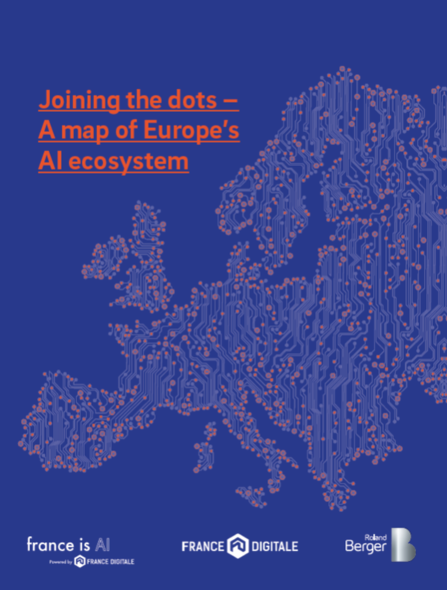Joining the dots - A map of Europe's AI ecosystem
![{[downloads[language].preview]}](https://www.rolandberger.com/publications/publication_image/Cover-joining-the-dots_download_preview.png)
We have mapped the European artificial intelligence ecosystem, which consists of 2,261 start-ups, 383 labs, and 3,801 communities. Explore the insights from our study here.


Artificial intelligence (AI) is not yet so intelligent that it happens by itself. The process of automating tasks previously only suited to humans is driven by huge amounts of data, smart algorithms and even smarter people.
By the same token, AI is not only about startups developing the technology or using it in self-driving cars or to automate emails. There is a whole ecosystem behind it. While startups are a vital part, this also includes research laboratories (including public and private labs, and combinations of the two), all kinds of communities (from informal groups to conferences and public/private associations) and investors.
Roland Berger is at the forefront of AI knowledge research, having published many important studies in this area. One of the most recent (Artificial Intelligence – A strategy for European startups) found that Europe’s AI ecosystem is thriving, but, unlike in the US or China, it is fragmented and lacks a clear strategy. This means the continent could get left behind.
To help remedy this, and in partnership with France Digitale, we carried out a study to investigate what exactly the European AI ecosystem looks like: who’s involved, where they’re based and what they’re doing. It covered 30 countries and included a detailed look at startups, products, research labs, communities and investors.
The result is a comprehensive map of the European AI ecosystem. It shows a rich and diverse landscape, highlighting three distinct country clusters. In summary, the ecosystem consists of 2,261 startups, 383 labs and 3,801 communities spread over 4 dominant, 12 rising star and 14 follower countries.

![{[downloads[language].preview]}](https://www.rolandberger.com/publications/publication_image/Cover-joining-the-dots_download_preview.png)
We have mapped the European artificial intelligence ecosystem, which consists of 2,261 start-ups, 383 labs, and 3,801 communities. Explore the insights from our study here.